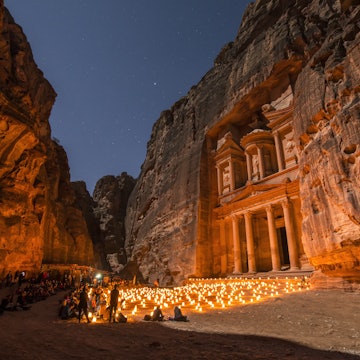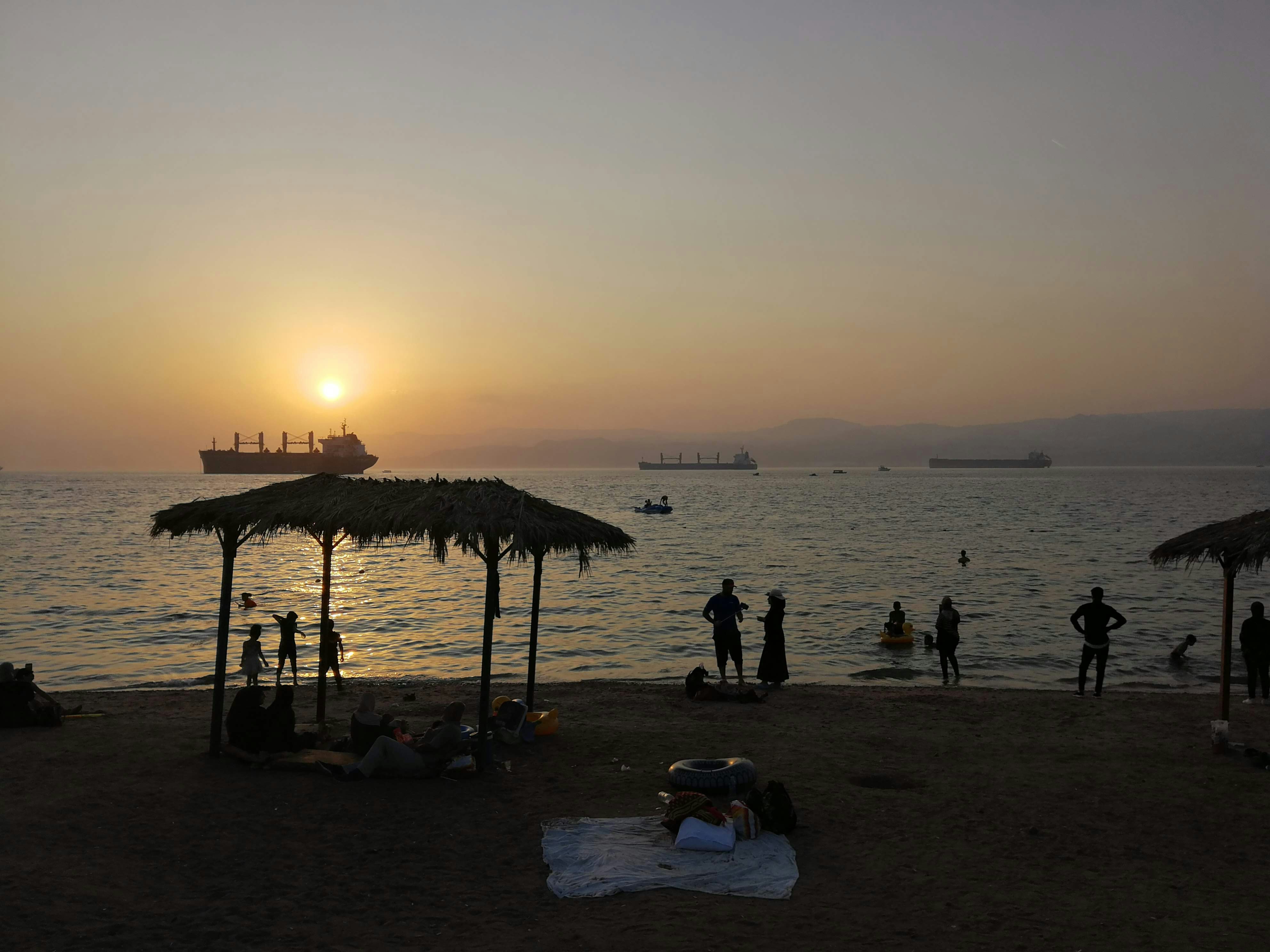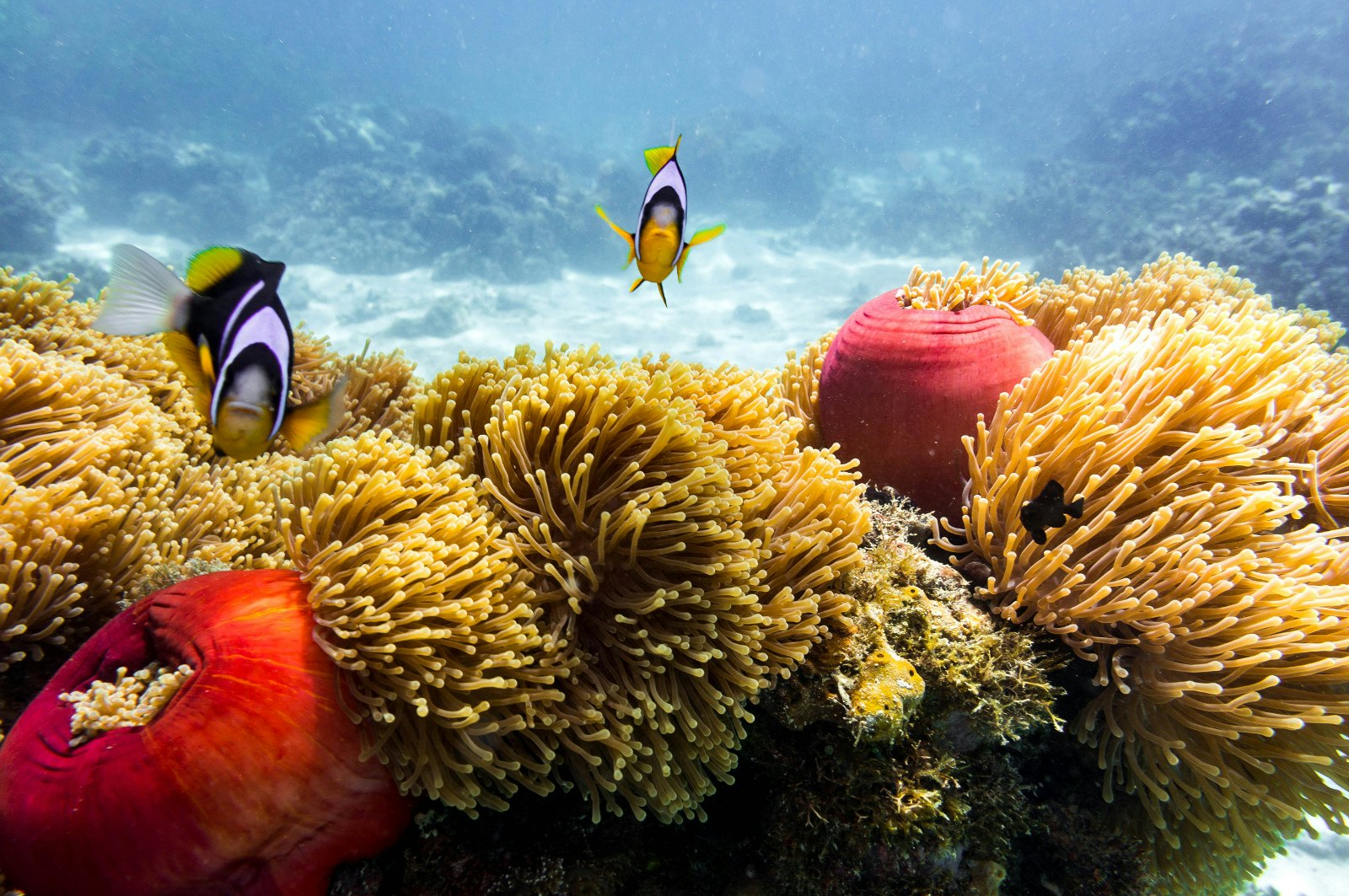
Why Jordan should be your next diving and snorkelling destination
Feb 18, 2020 • 6 min read

Home to a kaleidoscopic array of marine life, the Red Sea boasts some of the world’s most coveted coral gardens, reefs and sunken wrecks that are perfect for scuba diving and snorkelling.
It’s easy to see why; with more than 1000 species of fish here, and over 200 species of hard and soft coral (including the red-hued reefs that supposedly give the sea its name), exploring its depths makes for hours of underwater adventure.
The Red Sea is the world’s only tropical sea that is almost entirely surrounded by land, and the visibility is outstanding due to the fact that no rivers flow into it. Bordered by six countries, there are bountiful choices for a base. While most travellers head to Egypt or Israel, Lonely Planet editor Christina Webb decided to take a trip to Jordan instead, to the city of Aqaba, where she found a spectacular marine park sitting pretty on the country’s tiny, yet marvellous, slice of coastline.

A compact, mellow seaside spot, Aqaba is full of palm-fringed avenues and small markets; we fell in love with its no-frills vibe. The city’s location is perfect to reach other experiences in the southern tip of the country, including Petra and the Wadi Rum desert.
Dive centres
Diving costs are relatively low in Aqaba, and you can find some of the world’s most trusted dive centres here. My boyfriend and I opted for PADI-operating Dive Aqaba, the self-proclaimed ‘mother of the diving industry’ here. I’d dived before but needed a refresher and my boyfriend was trying diving for the first time, so we wanted to make sure we were in safe hands. We found the team to be reputable and trustworthy, but also down-to-earth.
Established almost 20 years ago by father and step-son Amjad Sulaibi and Rod Abbotson, Dive Aqaba has a unique history. Aqaba’s dive sites were named by Rod himself, who also holds the record for the deepest dive in Jordanian history (167m if you were curious).

Wrecks
The wrecks play a pivotal part in what lures divers to Aqaba each year. You can find a tank, a plane and a spectacular ship all within metres of each other and the beach. There’s also the well-preserved Al Shorouk shipwreck at between 30 and 60 metres depth, and a more technical dive at the Taiyong shipwreck. These sunken beauties are, quite literally, fit for a king – King Abdullah II of Jordan frequents the waters often.
Marine life
Flitting above and amongst vibrant hard and soft corals, you’re likely to see a brilliant selection of fish when snorkelling or diving, the most recognisable being parrotfish, clownfish and lionfish. More rarely, you can spot seahorses, sea turtles, rays and moray eels. You can also find life in the nooks and crevices of the wrecks, such as starfish, crabs and shrimps.

Accessibility
I’ve had some incredible diving experiences before, from coasting alongside green sea turtles in Bali to seeking out the sardine run in the Philippines. In comparison, the diving in Aqaba Marine Park was the most effortless and varied because the sites are so easy to find and there are a whopping 23 to choose from.
For those who want to base themselves in the heart of the diving community, there are good dive hotels and hostels lining the reefs at South Beach such as the Red Sea Dive Center and boho Darna Village, though there is little else nearby. For others, you can easily jump into a cheap taxi from Aqaba city and be at the waterfront within 20 minutes.
My snorkelling experience
The Marine Park’s shallow corals make for fabulous snorkelling. We spent two days snorkelling and took our own masks and breathing tubes – we didn’t feel the need to wear wetsuits, but for some the water can feel a little chilly! If you pay a little more, equipment, suits and fins can be provided.

Taking to the water we immediately found the beautiful reefs in the Japanese Garden, Aqaba’s most popular reef for snorkelling. We also spent time drifting over other reefs such as the Rainbow Reef and Seven Sisters – all very near one another. We saw, amongst many other things, clownfish, a number of meek lionfish (though highly venomous, they tended to be hiding beneath coral or within wrecks), pipefish, masked puffer fish, parrotfish and a huge humphead wrasse fish.
The visibility was so good that we decided to swim over to some of the wrecks, one simply named ‘The Tank’, and the C-130 Hercules aircraft wreck, the most recent addition – it was once a military transport aircraft since donated from the Royal Jordanian Air Force.
After some time, my boyfriend started to hold his breath and freedive; very quickly he was diving to depths of about five or six metres. Swimming down to glimpse the wrecks close-up, he even managed to spot a little lionfish sitting in the cockpit of the plane!
My diving experience
We got fitted and kitted, starting our dive at South Beach. We drifted along a gorgeous, teeming reef gradually, as my ears tend to equalise pretty slowly. Once we were completely comfortable we swam along to the Cedar Pride shipwreck. Nothing can prepare you for the ship’s dramatic form coming into view, lying peacefully on one side. Getting up close is even more surreal; with almost 35 years of underwater activity sprouting from all angles of the ship, it’s a haven for marine life.

Next was our personal highlight. We ducked and dived into the interior of the ship. Our instructor pointed upwards, and as I looked up, it was as if I was looking at the surface just above my head. At 16m deep, this couldn’t be possible. Confused, we glided towards what we discovered to be an air pocket within the ship! When the Spanish cargo ship was carefully sunk in 1985 by the World Wildlife Fund, this bubble formed by chance, and the air is kept (mostly) fresh by experienced divers releasing air from their tanks into it every so often. We took our breathing regulators out and were able to verbally exclaim our surprises before setting off again into the water and back to shore.
When to go to the Red Sea
November is the perfect time for a Red Sea exploration. You can expect great visibility, lower rates at hotels and comfortable temperatures both in and out of the water. Other decent times to go are late January through to May – though this period can see more divers and higher accommodation prices – and October. I’d recommend a minimum of a few days to a week to spend diving in Aqaba, or an afternoon to two days if you’re just snorkelling.
You might also like:
10 of the world's best learn-to-dive destinations
Top 10 things to do before travelling to Jordan
Where to find the best scuba diving sites in the Middle East















